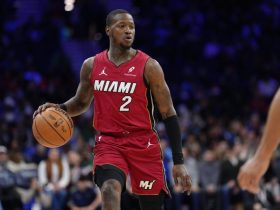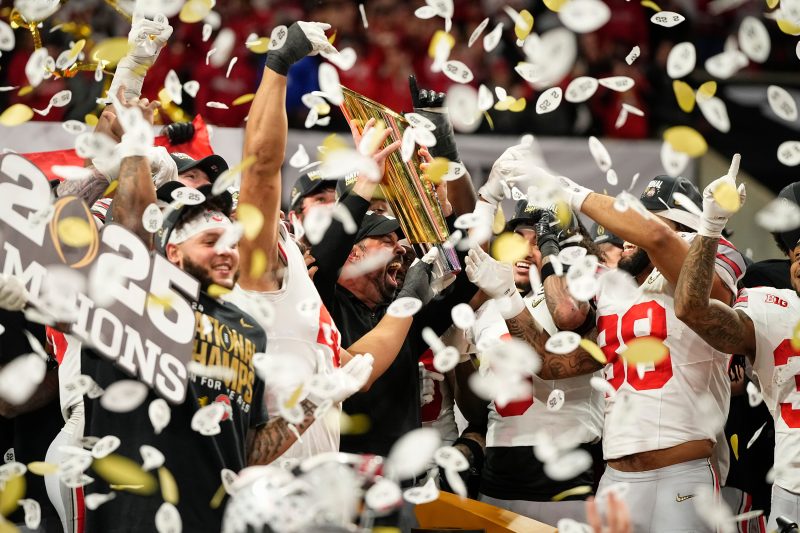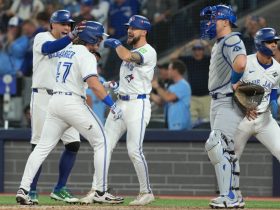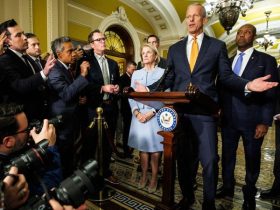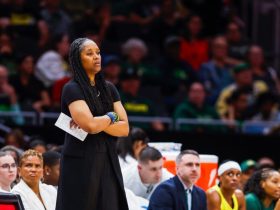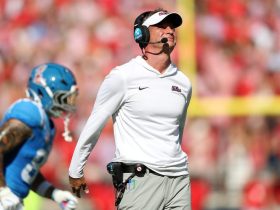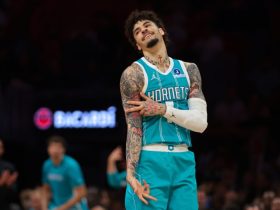This money madness in college football, the frenzy of firing and hiring coaches no matter the cost, is just the tip of financial stupidity.
As crazy as it sounds, the first step of money management in college football isn’t for future coaching contracts. It’s aimed at the very group that missed out on the money for the first 150 years: the players.
And it will be a financial bloodbath.
Because one thing is clear in the big money era of college football: Coaches can fail, players can’t. While universities have no problem throwing millions in buyouts at coaches who can’t win, they’re increasing performance-based deals for players in case they don’t meet expectations.
“It’s not just that the sport is changing,” Missouri coach Eli Drinkwitz told me this summer. “It’s that it’s changing every day, in every way possible.”
But the inevitable very few saw coming is the once hallowed ground of player accountability.
Forget about the $50 million Penn State paid James Franklin to not coach, or the $53 million LSU just swallowed to make Brian Kelly go away. Or any other coaching buyout that has sucked the very life from the sport over the past month of a wildly competitive (and overlooked) season.
This is about the players, and how a majority of them ― despite the narratives told ― are again at the short end of the financial game. It’s not as simple as sharing media rights revenue with universities, and signing large private NIL deals.
There’s the fine print few see, and all will soon realize. While many players are making significant financial gains, the majority aren’t.
Hundreds are making more annually than the NFL player minimum of $840,000, and all (more than 13,000 FBS players alone) are officially being paid to play. Some ridiculous amounts as single-season mercenary hires (hello, Carson Beck), others paid hundreds of thousands of dollars before they even step on a college field (every blue-chip high school recruit).
For everyone else, it’s a crapshoot of sorts. Those who perform at a high level are paid, those who don’t, aren’t paid for long.
There was a time when the idea of player accountability in the new era of pay-for-play meant dealing with unruly fans stalking them with social media muscles. But the more impactful consequence is universities and boosters clawing back money in performance-based NIL deals.
Nearly all revenue sharing deals with schools, and private NIL deals, are one-year contracts. If you think patience with coaches is wearing thin among universities and boosters, it’s only a matter of time before it moves to players.
We’re not even a year into the new world of revenue sharing and private NIL deals, and already schools and boosters have moved into preservation mode, structuring as many performance-based deals as possible. The elite of the game — current star players and five-star high school recruits — can demand guaranteed deals.
For everyone else, it’s performance-based earnings. And once it goes bad, universities and booster-backed NIL collectives simply throw money at the next high school recruit, or transfer portal addition.
Or as one college football general manager told USA Today Sports: “Do you realize how much lost money is in the transfer portal every single season?”
That leaves the sport with cyclical turnover sickness, players annually moving (or threatening to move) from team to team, and contract to contract. Some to get a raise, some to make up for lost cash from a previous performance-based deal. Some to get paid for the first time.
When Ohio State spent nearly $20 million on last year’s national championship roster, the majority was spent to retain current players. Giving them enough money in NIL deals to either turn down the NFL, or turn down other schools.
The advent of revenue sharing this season added another layer to the season-by-season transactional monster. Now it’s not just paying players, but paying by positional, previous and predicted values.
Produce and get paid another season. Struggle, and your number decreases through clawbacks.
It’s impossible to predict how much money annually is spent — and/or promised with performance-based incentives — on player salaries, because deals aren’t public knowledge. But it’s not hard to find the ballpark.
Most schools spend 75% of the available $23 million revenue share money on football. That 75% is $17.25 million, and if 80% of the 68 Power conference schools (54 schools) spend that $17.25 million, that’s nearly a billion dollars annually in player revenue share salaries.
Just from the Power conferences.
That number also doesn’t take into account private, performance-based NIL deals, which pushes player salaries to an unthinkable number — with the majority performance-based in one form or another.
One final dose of fiscal reality: more than 3,400 FBS players entered the 2024-25 transfer portal.
That’s a lot of dead money.
“There’s no denying it anymore, it’s a business. A big business,” said Maryland coach Mike Locksley.
And we’ve only reached the tip of overcoming financial stupidity.
Matt Hayes is the senior national college football writer for USA TODAY Sports Network. Follow him on X at @MattHayesCFB.




